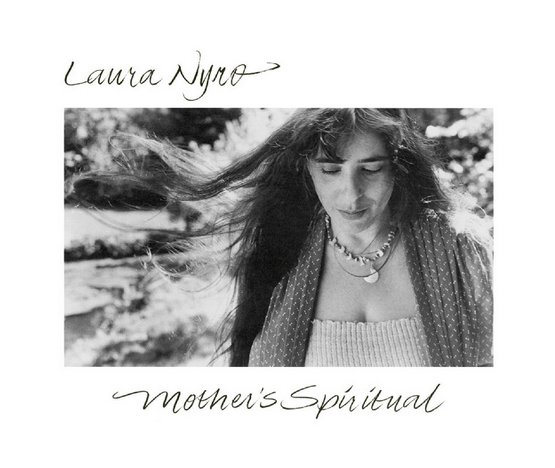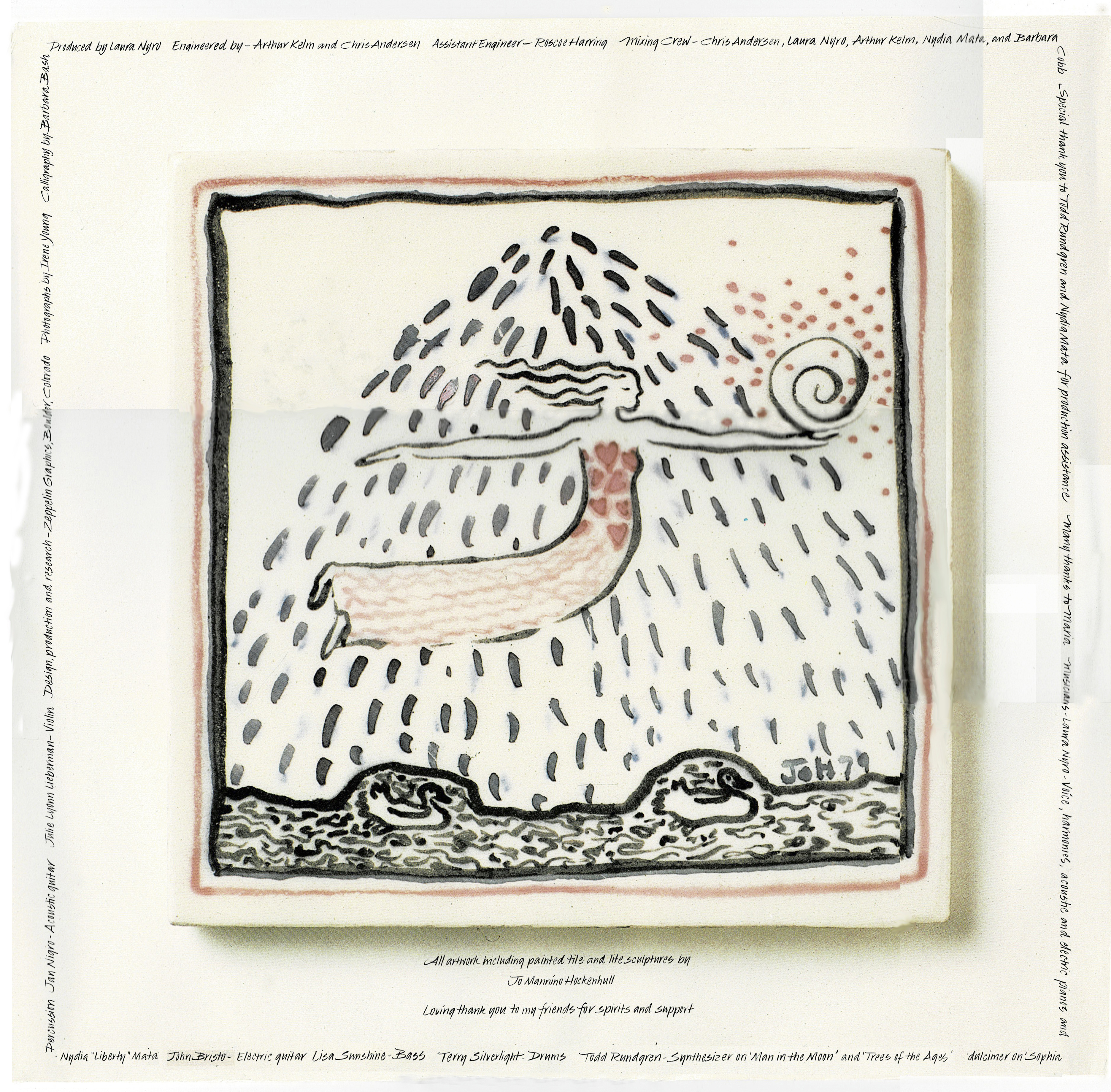Terry Silverlight talks about being the drummer on
Laura Nyro's Mothers Spiritual album


Terry Silverlight talks about being the drummer on
Laura Nyro's Mothers Spiritual album


Being the drummer on Laura Nyros "Mother's Spiritual" album was one of the greatest musical experiences of my career. She became an idol of mine at age ten, when my brother introduced me to her "Eli And The Thirteenth Confession" album. I never dreamed I would get to work with her as an adult over a period of two years for the recording of "Mother's Spiritual".
I was recommended to Laura by percussionist Nydia "Liberty" Mata, whom I had been doing gigs with around Manhattan, circa 1981. I remember Nydia saying she and Laura were friends, and along with some other friends, had spent an afternoon enjoying the view atop a mountain discussing plans for Laura to record a new album, searching for the right musicians to accompany her. Nydia mentioned my name and I remember her saying Laura's response was something like, "Silverlight. I like the sound of that". Based upon that moment in time, a month or so later I got a call to "visit" Laura so she could "check me out". After I arrived at Laura's house and we were introduced, she said, "Let's take a walk". Just the two of us strolled around her serene, wooded property for a few minutes while she asked me a string of simple questions, such as, what's my musical background, where did I grow up, etc. After we went back into her house, she played me some demos she was working on, and the session ended. I didn't play a note. A couple of weeks later, I got a call inviting me to be the drummer for her next album.
Up until this point in my career, I was familiar with both the "freelance musician/session player, show up for the date, sight read charts, make quick changes to the arrangement, cut two, three, four takes, end of session" approach and the "extended" approach of taking time to get sounds and experiment with musical possibilities. Laura's project, in the extended category, was a new experience for me stretching over about two years. It wasn't a straight run though, as half that time consisted of breaks in between sessions that were sometimes just a few days apart and one time in particular that was nearly a six-month break. That break was a result of her deciding she didn't want to continue recording at the studio we had been doing sessions in over the course of several months, and instead built a studio in her house to finish the album. After the last session I did with her at the first studio, Laura came into my drum booth and said, "Terry, I think we're going to take a break from this for a while". I assumed that was the end of the project and I'd never hear from her again, but it turned out she needed time to build her home studio.
The pace of her sessions was leisurely. I was paid by the day, not the hour, allowing total focus on the music, not the clock and the money. She didn't want to rush through anything, instead giving her songs and the arrangements every possibility of finding their own way to becoming the best and most complete. I've seen artists, producers and songwriters approach it from both angles. Some take their sweet time and others prefer the forward motion of going with first takes. With my own songwriting and production, I'm grateful to have seen first hand both sides of the coin, and Laura was definitely the best example of how to take your time, which influenced on me in those instances where my music benefited from that strategy. I must say there were times when Laura's changing her mind with a song's structure, melody, words, music and arrangement were slightly frustrating for me, at first. She'd start a session with a new song she was working on and it would just blow me away how beautiful and great it was. In the next session, she'd play the same song, but my favorite part, perhaps the bridge, would be gone! But, over the course of the song's development, she actually didn't trash it and as time went on, the bridge I loved would work its way back in with a few alterations and even better.
Laura called Todd Rundgren to produce a couple of the tracks. His approach was quite different. He set up camp in Laura's living room with a set of headphones and a microphone, giving eq and other sonic instructions to the engineer, all of which I could hear in my own headphones. Todd amazed me at his mastery of that. He pushed the sessions through much quicker, one take after the next with little down time in between and a limited amount of redoes. Getting to witness two of my favorite artists approaching a session so differently, yet both of them with equal validity fascinated me.
Another factor contributing to the length of time it took to record the album is how Laura structured each session. She would begin by playing a string of her favorite R&B classics. Sometimes the entire session was that and we never made it to working on her originals. At the time, I thought she was just warming up and jamming with the classics, but in retrospect I think she was actually working on two projects at once: "Mother's Spiritual" with original material, and a classics project (with perhaps some originals thrown in).
I marveled at Laura's attention to the importance of feel, vibe and mood. I think she was keenly aware of her natural and extraordinary ability to tap into the special place where feel, vibe and mood live. She could reach it immediately. It brings me back to the first time I met her on that walk around her property. She already knew I could play, but she wanted to be sure I had the right feel, vibe and mood for HER to comfortably create new material over an extended period of time. What strikes me most with Laura's music, and what endears her devout fans, is the wonderful feel, vibe and mood that runs throughout all of her songs. Of all my favorite "pop" artists, I've never heard any one nail it as consistently as Laura (OK, The Beatles). It was enlightening to witness first hand the importance she put on those attributes not only with the music she was writing, but the people she chose to be around her. I was given a heads up from the beginning, that although she selected me knowing I was a session musician capable of handling her music technically, she wanted musicians with easygoing, non-inhibiting personalities for her to comfortably create. I was careful to put my session player world in its place, and focus on Laura as the idol she was of mine and do whatever I could to make her feel comfortable with the creative process on her terms. I found it interesting that half the time I played with her, she leisurely followed her muse and let the feel, vibe and mood dictate how the sound and arrangements would develop. She allowed me the freedom to go with my own muse as a drummer and demonstrate various ways something could be played. After hearing several possibilities, she'd select what she thought was the best fit for the song. The other half of the time I played with Laura, once she settled on the parts, she rarely changed her mind and I had to play them exactly the same way every time we rehearsed or recorded a take. I wasn't reading off of charts drum parts that someone had written for me, or following instructions from a producer what to play. Instead, I was memorizing parts that I helped create with Laura that now were etched in stone. I guess you could say the first half of the process was "jazz" by improvising the creation of parts, and the second half was "rock 'n roll" by performing them exactly the same way every time. Both halves were equally challenging and rewarding for me, and Laura was a master at putting both aspects in their rightful places.
- Terry Silverlight